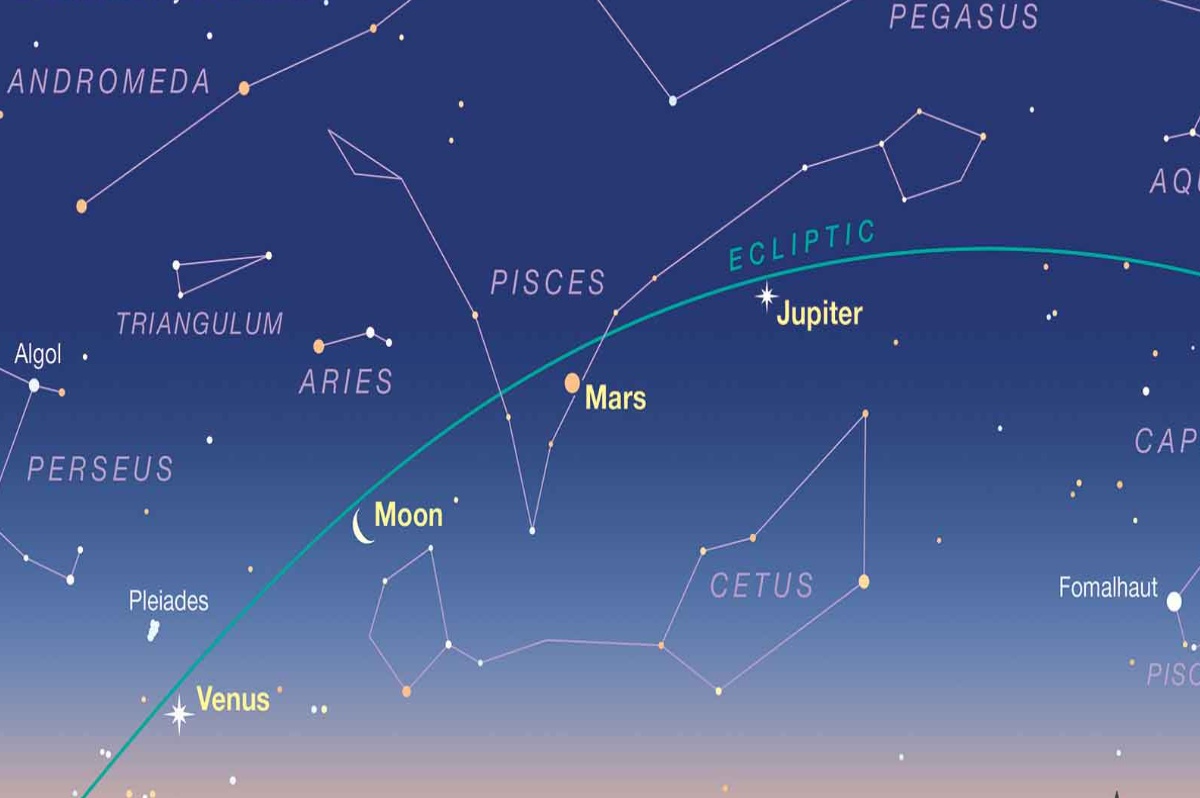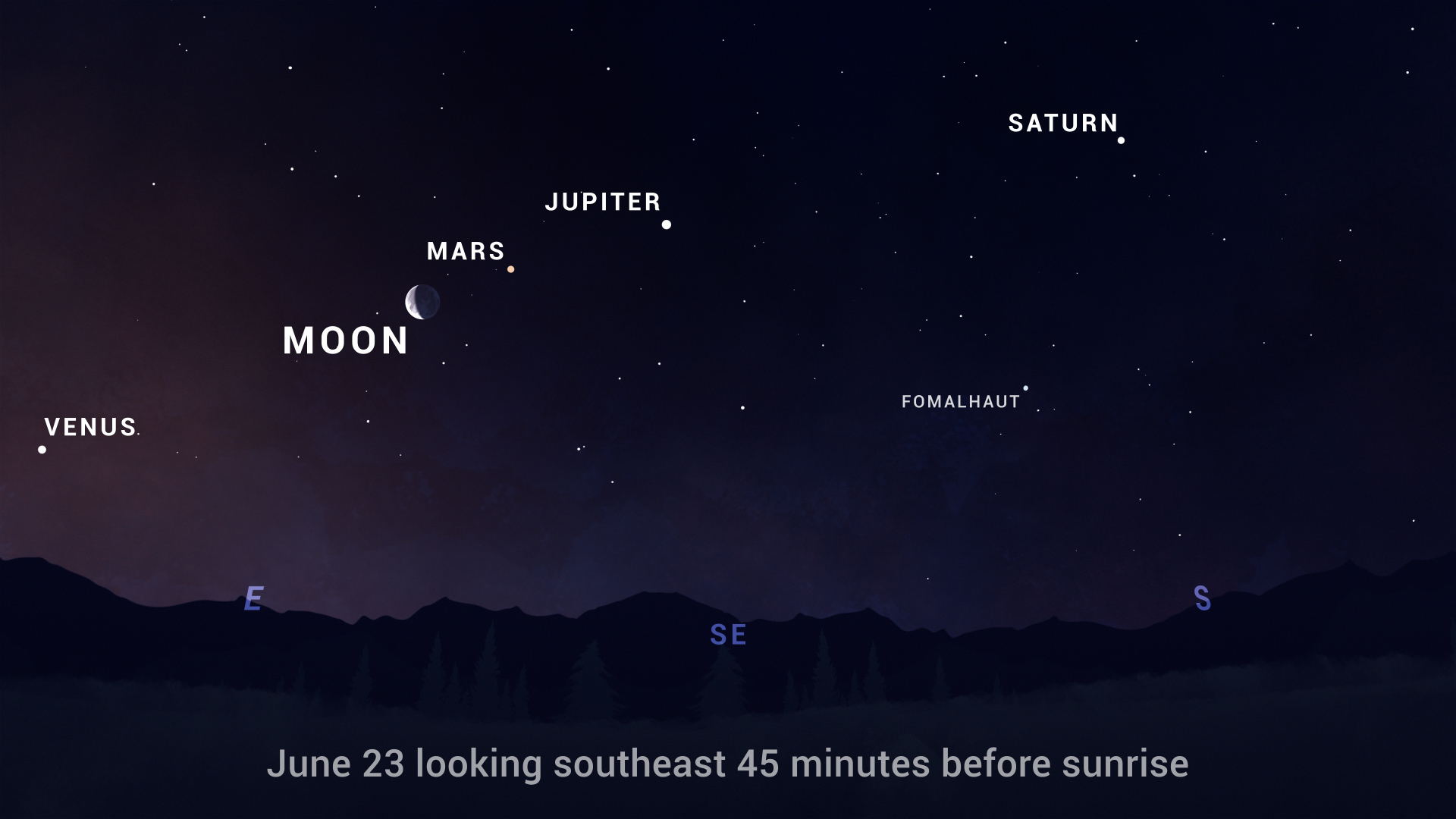
A map published by the Astronomical Society’s Sky & Telescope magazine shows the planets appearing from left to right in this order — Mercury, Venus, Mars, Jupiter and Saturn. Mercury will appear at the lowest point on the horizon.
The gathering of four naked-eye planets we’ve been enjoying in the morning sky for the past few months — including several close conjunctions, is beginning to break up. Over the next few months, Saturn, Mars, Jupiter, and Venus will appear increasingly spread out across the morning sky — so much so that Venus and Saturn will make their exits as morning objects for most observers by September.

June is an excellent time to observe one of the best-known globular star clusters — M13, also known as the Hercules Cluster. Globular clusters are spherical collections of stars, tightly packed together in their centers. M13 itself contains several hundred thousand stars.
Globular clusters are also extremely old. The stars in M13 are thought to be around 12 billion years old, which is approaching the age of the universe itself. Our home galaxy, the Milky Way, is known to have about 150 globular clusters. They orbit outside the galaxy’s disk, traveling tens of thousands of light-years above and below its spiral arms and most of its stars.
